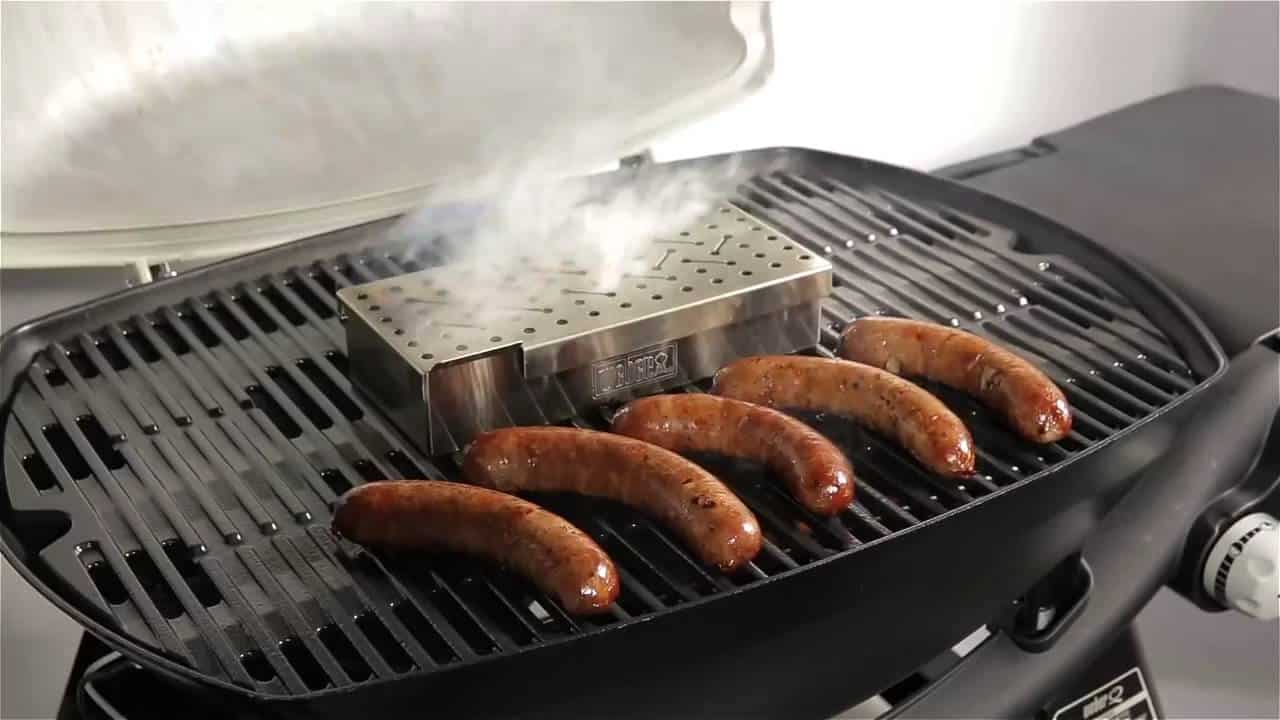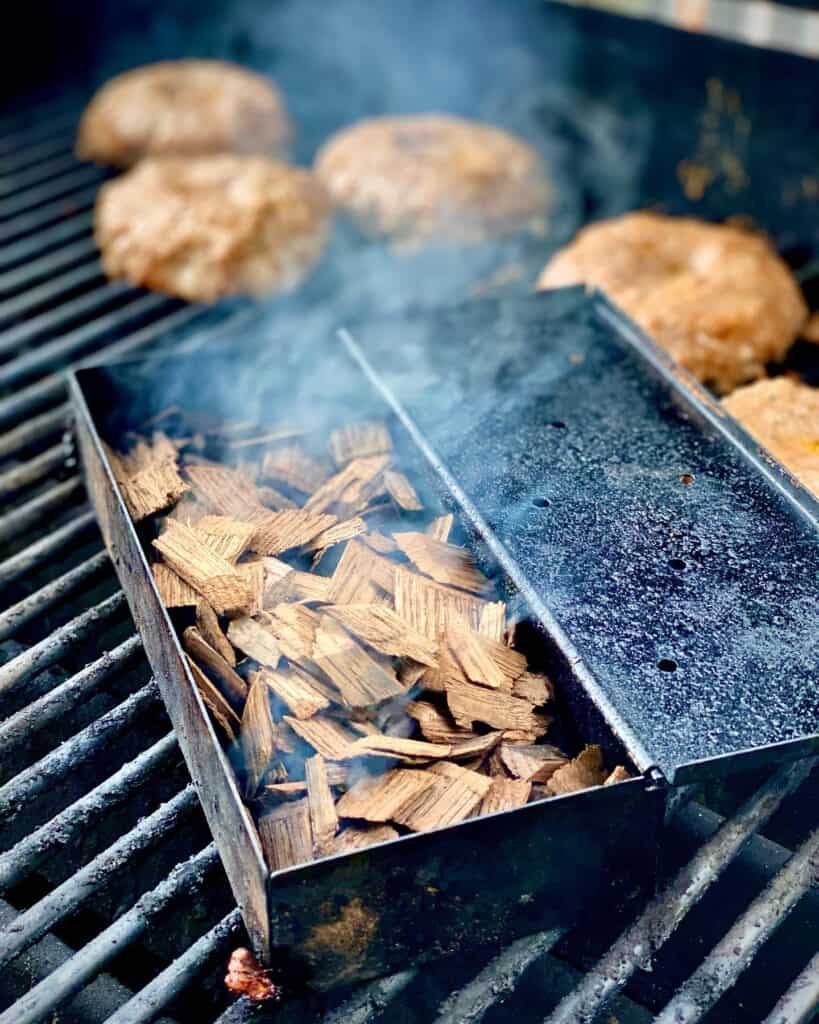From Wood Chips to Mouthwatering Meals: How to Use a Smoker Box Like a Pro
How to use a Smoker Box? To use a smoker box, fill it with wood chips, place it directly on the grill grate or charcoal, and allow it to produce flavorful smoke while cooking food.
As a passionate grilling enthusiast, I have always been intrigued by the art of smoking meat. There is something magical about the slow cooking process that infuses the meat with a rich and smoky flavor. One tool that has revolutionized my smoking experience is the smoker box.
A smoker box is a small container designed to hold wood chips and be placed directly on your grill. When heated, these wood chips release aromatic smoke that permeates the meat, enhancing its flavor and aroma. The concept of smoking meat dates back centuries, with ancient civilizations using various methods to preserve food and add flavor.
The advantages of using a smoker box are numerous. Firstly, it allows you to achieve that authentic smoky taste without investing in an expensive dedicated smoker. Secondly, it adds versatility to your grilling repertoire as you can experiment with different types of wood chips for unique flavors. Lastly, smoking is considered a healthier cooking method compared to traditional grilling or frying since it requires less oil or fat.
Key Takeaways
- Smoker boxes are a great way to add smoky flavor to your grilled meats.
- There are different types of smoker boxes, including cast iron and stainless steel.
- Using a smoker box can help keep your meat moist and tender while cooking.
- Choosing the right wood chips is important for achieving the desired flavor.
- Proper temperature control and smoking times are crucial for successful smoking.
Types of Smoker Boxes
Smoker boxes come in various shapes and sizes, each offering its own set of pros and cons depending on your needs and preferences.
One common material used for smoker boxes is stainless steel due to its durability and heat resistance properties. Stainless steel boxes are easy to clean and maintain but may not distribute heat as evenly as other materials.
Another popular option is cast iron smoker boxes which excel at retaining heat for longer periods of time resulting in consistent smoke production throughout the cooking process.
There are also disposable aluminum foil pans available which offer convenience but may not last as long as their metal counterparts.
When choosing a size or shape for your smoker box, consider factors such as grill space availability and desired smoke output volume.
Benefits of Using a Smoker Box
Using a smoker box offers several benefits beyond just adding flavor:
1) Enhanced Flavor & Aroma: The primary reason for using a smoker box is to infuse your meat with that unmistakable smoky taste. The slow and steady release of smoke from the wood chips creates a depth of flavor that cannot be replicated by other cooking methods.
2) Healthier Cooking Method: Smoking requires minimal oil or fat, making it a healthier alternative to frying or grilling. The low and slow cooking process allows the meat to retain its natural juices while reducing the formation of harmful compounds associated with high-temperature cooking.
3) Versatility in Cooking Different Types of Meat: Whether you’re smoking beef, pork, poultry, or fish, a smoker box can handle it all. With different types of wood chips available, you can experiment with flavors and find the perfect combination for each type of meat.
Choosing the Right Wood Chips
The choice of wood chips plays a crucial role in determining the final flavor profile of your smoked meat. Here are some factors to consider when selecting wood chips:
1) Types of Wood Chips Available: There is an extensive variety of wood chips available on the market, each imparting its unique flavor characteristics. Popular options include hickory for a strong and robust taste, applewood for a sweet and fruity aroma, mesquite for an intense smoky flavor, and cherrywood for a mild yet slightly sweet profile.
2) Matching Wood Chips with Meat: Different meats pair well with specific types of wood chips. For example, hickory complements beef brisket perfectly while applewood enhances the natural sweetness in pork ribs or chicken wings. Experimentation is key here as personal preferences may vary.
3) Importance of Quality Wood Chips: Opting for high-quality wood chips ensures consistent smoke production throughout your smoking session. Inferior quality chips may burn too quickly or produce off-flavors that can ruin your culinary masterpiece.
Preparing Your Meat for Smoking
Before placing your meat on the grill with the smoker box, it’s essential to prepare it properly for the smoking process. Here are a few key steps to follow:
1) Brining and Seasoning: Brining your meat in a saltwater solution prior to smoking helps enhance its moisture retention and flavor. Additionally, seasoning with dry rubs or marinades adds an extra layer of taste complexity.
2) Trimming Excess Fat: While some fat is desirable as it contributes to the overall flavor and juiciness of the meat, excessive fat can lead to flare-ups and uneven cooking. Trim any excess fat before placing your meat on the grill.
3) Importance of Room Temperature: Allowing your meat to come to room temperature before smoking ensures more even cooking throughout. Cold meat straight from the refrigerator may take longer to cook, resulting in potential dryness or uneven doneness.
Setting Up Your Smoker Box
Proper setup of your smoker box is crucial for achieving optimal results. Consider these steps when getting ready for a smoke session:
1) Placement of Smoker Box in Grill: Positioning your smoker box directly on top of the heat source ensures that the wood chips will ignite and produce smoke efficiently. For gas grills, place it over one burner while leaving other burners off for indirect heat cooking.
2) Adding Wood Chips: Fill your smoker box with wood chips according to manufacturer recommendations or personal preference. Soaking them beforehand can prolong their burn time but is not always necessary depending on the type of wood chips used.
3) Preheating the Grill: Allow your grill and smoker box sufficient time to preheat before adding your meat. This ensures that smoke production begins promptly once you start cooking.
Temperature Control
Maintaining consistent temperature levels during smoking is crucial for achieving perfectly cooked meats every time. Here are some tips for controlling temperature:
1) Importance of Consistent Temperature: Fluctuations in temperature can result in undercooked or overcooked meat. It’s essential to monitor and maintain a steady temperature throughout the smoking process.
2) Methods for Controlling Temperature: Adjusting the airflow vents on your grill can help regulate temperature. Opening them allows more oxygen in, increasing heat, while closing them restricts airflow and lowers the temperature.
3) Ideal Temperature Range for Different Meats: Each type of meat has an ideal smoking temperature range. For example, poultry should be smoked at around 225°F (107°C), while beef brisket benefits from a slightly higher temperature of 250-275°F (121-135°C).
Smoking Times for Different Meats
Smoking times vary depending on the type and size of meat being cooked. Here are some general guidelines to follow:
1) Guidelines for Smoking Different Types of Meat: Beef brisket typically requires 1 hour per pound at a low and slow cooking temperature. Pork ribs may take around 4-6 hours, while chicken wings can be ready in approximately 2 hours.
2) Factors That Affect Smoking Time: Factors such as ambient temperature, thickness of the meat, and personal preference for doneness can influence smoking times. It’s always best to use a reliable meat thermometer to ensure accurate cooking times.
3) Importance of Using a Meat Thermometer: A good quality meat thermometer is an indispensable tool when smoking meats. It allows you to monitor internal temperatures accurately, ensuring that your food reaches safe consumption levels without overcooking.
Adding Flavor with Marinades and Rubs
Marinades and rubs are excellent ways to add depth and complexity to your smoked meats:
1) Types of Marinades and Rubs: Marinades typically consist of acidic ingredients like vinegar or citrus juices combined with herbs, spices, oils, or even beer or wine. Dry rubs are mixtures of herbs, spices, salt, sugar or other flavorings applied directly onto the meat.
2) How to Apply Marinades and Rubs: For marinades, immerse your meat in the mixture for a few hours or overnight in the refrigerator. When using dry rubs, generously coat all sides of the meat, gently pressing it into the surface to ensure adherence.
3) Importance of Letting Meat Rest: After smoking, allow your meat to rest for a few minutes before slicing or serving. This allows the juices to redistribute throughout the meat, resulting in a more tender and flavorful final product.
Tips for Maintaining Your Smoker Box
Proper maintenance of your smoker box ensures its longevity and optimal performance:
1) Cleaning and Storing Smoker Box: After each use, clean your smoker box thoroughly by removing any ash or residue. Store it in a cool and dry place to prevent rusting or damage.
2) Replacing Wood Chips: Depending on their burn time, you may need to replace wood chips during longer smoking sessions. Keep extra chips on hand so you can replenish them as needed without interrupting cooking.
3) Regular Maintenance: Periodically inspect your smoker box for any signs of wear or damage. Replace any worn-out parts promptly to maintain its functionality and safety.
Delicious Recipes to Try with Your Smoker Box
Now that you have mastered the art of using a smoker box let’s explore some mouthwatering recipes:
1) Smoked Brisket: Start with a well-seasoned beef brisket coated with your favorite dry rub. Smoke it low and slow until tender perfection is achieved. The result will be melt-in-your-mouth slices of smoky goodness that will impress even the most discerning barbecue connoisseur.
2) Smoked Salmon: Prepare fresh salmon fillets by marinating them in a mixture of soy sauce, brown sugar, garlic powder, and lemon juice. Smoke at low temperatures until flaky yet moist salmon is achieved—a perfect dish for seafood lovers.
3) Smoked Chicken Wings: Toss chicken wings in a spicy dry rub and smoke them until the skin is crispy and the meat is juicy. Serve with your favorite dipping sauce for a crowd-pleasing appetizer or main course.
4) Smoked Pork Ribs: Apply a sweet and tangy barbecue sauce to pork ribs before smoking them to perfection. The result will be tender, fall-off-the-bone ribs that will have your guests coming back for seconds.
With the right tools and techniques, using a smoker box can elevate your grilling game to new heights. The ability to infuse meats with rich smoky flavors opens up endless possibilities for culinary exploration. Experiment with different types of wood chips, recipes, and cooking times to find your perfect flavor combination. Whether you’re hosting a backyard barbecue or simply enjoying some quality time outdoors, the smoker box is an invaluable tool that will impress family and friends alike with its delicious results. So fire up that grill, grab your smoker box, and let the smoky adventure begin!
FAQs
What is a smoker box?
A smoker box is a small metal container that is used to hold wood chips while grilling or smoking food. It is designed to infuse the food with a smoky flavor.
How does a smoker box work?
A smoker box works by holding wood chips and allowing them to smolder and produce smoke. The smoke is then drawn into the grill or smoker and infused into the food.
What types of wood chips can be used in a smoker box?
There are many types of wood chips that can be used in a smoker box, including hickory, mesquite, apple, cherry, and oak. Each type of wood produces a unique flavor.
How do you use a smoker box?
To use a smoker box, simply fill it with wood chips and place it on the grill or smoker. The box should be placed directly on the heat source, such as the burner or charcoal. Once the wood chips start to smoke, place the food on the grill and close the lid.
What types of food can be smoked using a smoker box?
A smoker box can be used to smoke a variety of foods, including meats, fish, vegetables, and even cheese. The smoky flavor adds depth and complexity to the food.
What are the benefits of using a smoker box?
Using a smoker box adds a smoky flavor to food that cannot be achieved through traditional grilling methods. It also allows for more control over the intensity of the smoke flavor. Additionally, using a smoker box can help keep the grill or smoker clean by containing the wood chips.
Originally posted 2024-02-06 16:47:21.




